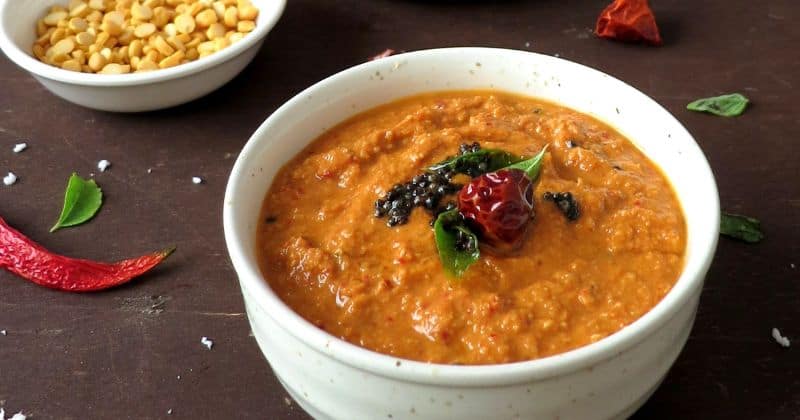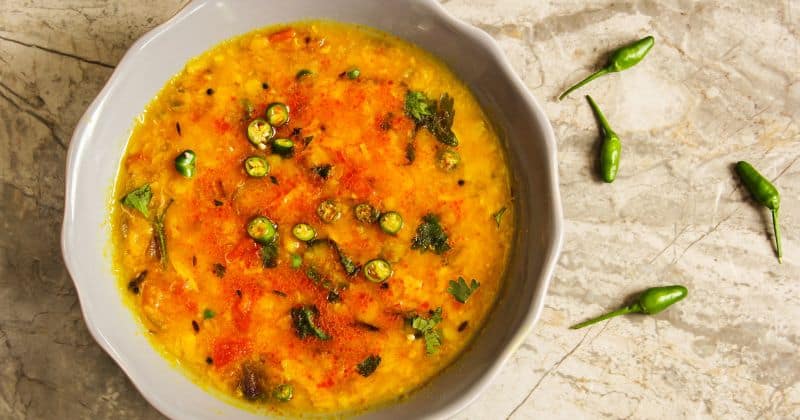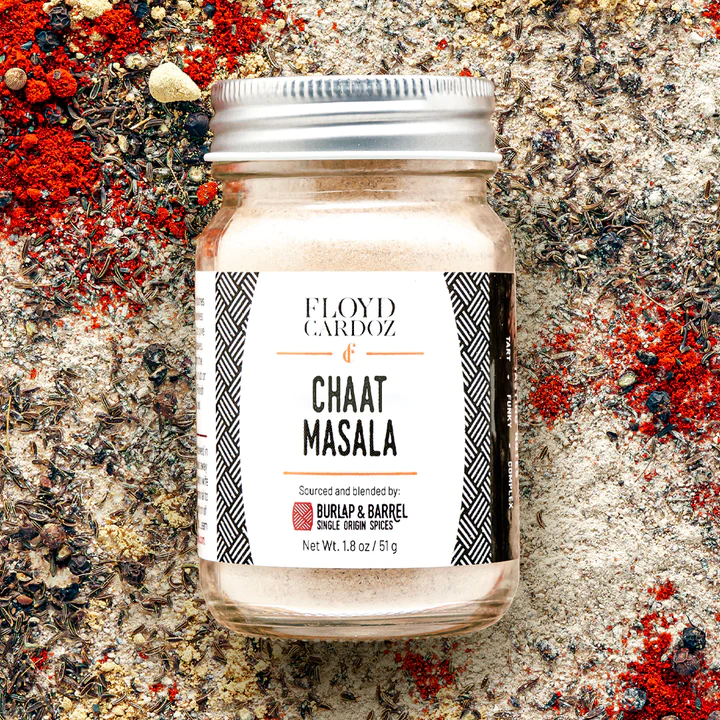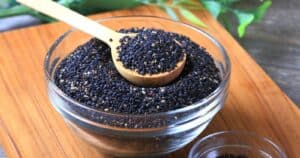If you want to add a new flavor to your cooking, an Indian
Ajwan has been used in India for centuries, adding depth and complexity to various dishes. In this guide, we will explore what exactly ajwain is and where it comes from, look at its unique flavor profile and what makes it special, and find out how best to use this versatile
We’ll also delve into its important place in traditional Indian cuisines and show you some popular dishes that contain it.
Finally, we’ve included our own homemade recipe for an ajwain blend so you can easily make your own blend at home, as well as pointers on potential substitutes in case you run out of the real thing! Ready to learn more about all things Ajwan? Keep reading!
Ajwan: What Is It, And Where Does It Come From?
Ajwain, also known as carom, ajowan, and bishop’s weed, is an herb commonly used in the cuisine of the Indian subcontinent. It is a small greyish-brown ovoid fruit with a fragrant, hot, and bitter taste.
Ajwain seeds are often fried or dry-roasted to soften their pungent flavor and smell. The traditional Indian herb can be found in Indian food markets, specialty
Ajwain has two qualities that help fight arthritis: antibiotic properties that reduce redness and combat inflammation and anesthetic properties that relieve pain.
To prepare Ajwain for cooking, it is usually ground in mortar and pestle or crushed by rubbing between hands or fingertips before use. When whole for parathas or other bread, it should be lightly bruised first to release oils and increase flavor. The seeds can be stored indefinitely if kept from light in airtight containers.
Ajwain is widely used in many dishes such as curries, chutneys, pickles, and soups, etc.; it can also be mixed with other spices like mustard, fennel, etc., to make a unique blend of flavors that enhances the taste of any dish it is added to.
As such, it has become an integral part of Indian cuisine due to its distinct aroma and flavor, which adds complexity to any dish it is added to.
The Flavor Profile Of Ajwan: A Unique Taste Of India
Ajwain is a unique and flavorful
Ajwain has a bitter and spicy taste, with a flavor similar to anise and oregano. Even in small amounts, it can dominate the flavor of a dish due to its strong aroma.
Cumin seed is also commonly used in Indian cooking and curries, although it has a more subtle flavor profile than Ajwain.
Cumin seed has a flavor profile reminiscent of caraway or dill, and it’s best used whole when fried in oil at the beginning of the dish. It’s important to note that cumin seeds will turn brown quickly when heated at higher temperatures; this should be considered when using them as part of your recipe.
Organic ingredients such as Ajwain and Cumin (Jira) are essential components of many Indian and African dishes due to their intense flavors.
Combining these two spices creates an earthy flavor profile reflective of its roots and origins, offering an aromatic scent that makes this profile easily identifiable. The unique taste provided by Ajwain makes it worth more per pound than gold!
Ajwain can be used as part of Ras El Hanout or Chaat Masala blends for added depth to your dishes; however, you should remember that because it has such an intense flavor, only small amounts are needed for maximum effect!
When combined with other spices such as cumin seed, you can create delicious dishes full of unique flavors from India!
How To Use Ajwan: Tips And Tricks For Perfectly Seasoned Meals
Here are some tips and tricks for making the most out of this versatile
- When cooking with Ajwain, add it to hot oil or butter in the frying pan before adding other ingredients to release its full flavor potential. Let it sizzle for 5-20 seconds before adding onions, garlic, or ginger.
- Adding a few leaves of Ajwain into curries can give an extra layer of flavor without overpowering them. It also works excellent in seasoning mixes for deep-fried foods like potato chips.
- Ajwain is an excellent
spice for bread, such as parathas or ciabatta-like loaves, adding something unique to the dish without being overwhelming. - Finding a balance between all the flavors is key so they work together harmoniously rather than competing against each other for attention on your plate.
- Using Ajwain correctly can improve your cooking skills and help you create delicious meals whenever you cook, whether making curries, bread, or deep-fried foods.
Ajwan In Indian Cuisines: A Key Spice In Indian Cooking
Ajwan is an essential seed-like fruit used in Indian cooking with a unique flavor and aroma. Here are some other key spices commonly used in Indian cuisine:
Coriander
This cilantro seed has an aroma like citrus mixed with some leafy and woody notes, making it perfect for Madras and Vindaloo dishes. The best way to use coriander seeds is to grind them into powder just before adding them to sauces or other dishes.
Nutmeg
Comes from fresh nutmeg that has been processed by removing its pulpy outside and sliding off its mace covering to reveal the inner nutmeg seed underneath it all. It has a warm, sweet, and spicy flavor and can be added to various Indian dishes.
Mace
This outer covering of the nutmeg seed has a dark-red coloration and has many uses in Indian cooking. Grounding up into powder form and added to sauces or curries adds an extra layer of depth and complexity to the dish.
All of these spices are used in combination with Ajwan to create something extraordinary in Indian cuisine. By roasting the ajwain seeds in ghee or oil, grinding the coriander into powder, and adding nutmeg and mace, you can create a range of flavors and aromas unique to Indian cooking.
The balance of these spices is essential to create a harmonious blend that complements the other ingredients in your dishes. Experiment with these spices to see what works best for you, and enjoy the flavors and aromas of Indian cuisine!
Ajwan in Popular Dishes
Here are some of the most popular ways to incorporate Ajwan into your cooking:
Chutneys

Ajwan is commonly used in chutneys, sauces, or condiments served with various dishes in India. Green chutney is a popular variety for chaat recipes or as a dipping sauce for snacks like samosas and sandwiches.
Dry garlic chutney is another popular variety that can be used for vada pavs. Peanut chutney, green coriander, coconut chutney, cilantro chutney, and schezwan sauce are other terrific options that all use Ajwan as a key ingredient.
Curries and Tadka

Ajwan is commonly used in Indian curries and as a tadka in pakoras and dals. It adds depth and complexity to the dish without overpowering it.
Middle Eastern Dishes
Ajwan is also a popular spice in Middle Eastern recipes. It can add depth to meat and rice dishes as a preservative for pickles, jams, and other condiments. The unique flavor of Ajwan helps bring out the natural sweetness of vegetables while adding complexity to savory dishes like curries or stews.
Marinades and Rubs
Ajwan can also be added to marinades or rubs before cooking meats like chicken or lamb. It helps tenderize the meat while giving it an extra layer of flavor that other spices cannot replicate.
Homemade Ajwain Powder Recipe
Did you know you can easily make your own ajwain powder at home? Here’s how to do it:
Ingredients:
- 1 cup ajwain seeds
Instructions:
- Heat a pan over medium-high heat and add the ajwain seeds.
- Roast the seeds for about 5 minutes, occasionally stirring, until they become fragrant and turn a shade darker.
- Remove the pan from the heat and let the seeds cool down for a few minutes.
- Once the seeds have cooled down, transfer them to a
spice grinder or mortar and pestle. - Grind the seeds into a fine powder.
- Transfer the ajwain powder to an airtight container and store it in a cool, dry place.
Now that you have your homemade ajwain powder, you can use it in various dishes, such as curries, chutneys, soups, stews, and baked goods.
You can also experiment with different ratios of ajwain powder to other spices to create your unique blend. Enjoy the rich, complex flavor and aroma of ajwain in all your favorite recipes!
Ajwan Substitutes: Alternatives for When You’re Out Of Ajwan
When you’re in a pinch and find yourself without Ajwan, there’s no need to fret as several substitutes can provide a similar flavor and aroma.
Roasted Cumin Seeds
The first substitute for Ajwan is roasted cumin seeds. Though milder than Ajwan, it still has a similar earthy and nutty flavor and provides an aromatic quality that can be substituted in dishes where Ajwan is commonly used. It’s important to note that cumin has a less bitter aftertaste than Ajwan so the overall flavor profile will be slightly different.
Dill
Another great substitute for Ajwan is dill. It has a potent flavor similar to caraway or fennel seed but without bitterness. Dill also has an aromatic quality identical to thyme, which can help fill in the gaps left by not having Ajwan in your recipe.
When using dill, remember that its flavor will be more intense than what you would get from Ajwan, so using slightly less than your recipe calls for is recommended.
Other Options
Adding black pepper or chili powder can help create the desired effect if you’re looking for more heat or
Overall, both roasted cumin seeds and dill are excellent substitutes for Ajwan, each providing its own unique flavors and aromas. Don’t let a lack of Ajwan in your pantry stop you from creating delicious and flavorful dishes!
Where to Buy Ajwain?
Ajwain can be found in most Indian grocery stores or
When purchasing Ajwain, checking the expiration date and ensuring that the
Closely related to thyme, ajowan seeds are often used in lentil dishes and South Asian cooking. Roasting the seeds in ghee or neutral oil brings out their essential flavor. Although ajowan looks like a seed, it is technically a fruit.







